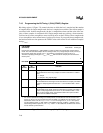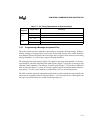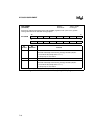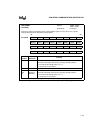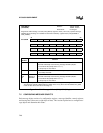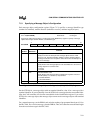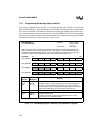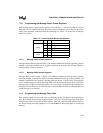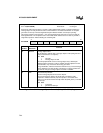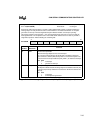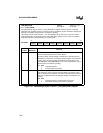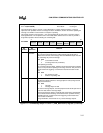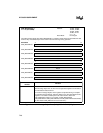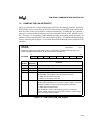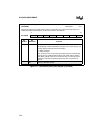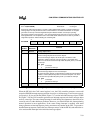
87C196CB SUPPLEMENT
7-24
CAN_MSG
x
CON0
x
= 1–15 (87C196CB)
Address:
Reset State:
1E
x
0H (
x
= 1–F)
Unchanged
Program the CAN message object
x
control 0 (CAN_MSG
x
CON0) register to indicate whether the
message object is ready to transmit and to control whether a successful transmission or reception
generates an interrupt. The least-significant bit-pair indicates whether an interrupt is pending.
This register consists of four bit-pairs — the most-significant bit of each pair is in true form and the
least-significant bit is in complement form. This format allows software to set or clear any bit with a
single write operation, without affecting the remaining bits.
7 0
87C196CB
MSGVAL MSGVAL TXIE TXIE RXIE RXIE INT_PND INT_PND
Bit
Number
Bit
Mnemonic
Function
7:6 MSGVAL Message Object Valid
Set this bit-pair to indicate that a message object is valid (configured and
ready for transmission or reception).
bit 7 bit 6
0 1 not ready
1 0 message object is valid
The CAN peripheral will access a message object only if this bit-pair
indicates that the message is valid. If multiple message objects have the
same identifier, only one can be valid at any given time.
During initialization, software should clear this bit for any unused message
objects. Software can clear this bit if a message is no longer needed or if
you need to change a message object’s contents or identifier.
5:4 TXIE Transmit Interrupt Enable
Receive message objects do not use this bit-pair.
For transmit message objects, set this bit-pair to enable the CAN
peripheral to initiate a transmit (TX) interrupt after a successful trans-
mission. You must also set the interrupt enable bit (CAN_CON.1) to enable
the interrupt.
bit 5 bit 4
0 1 no interrupt
1 0 generate an interrupt
Figure 7-14. CAN Message Object
x
Control 0 (CAN_MSGxCON0) Register



